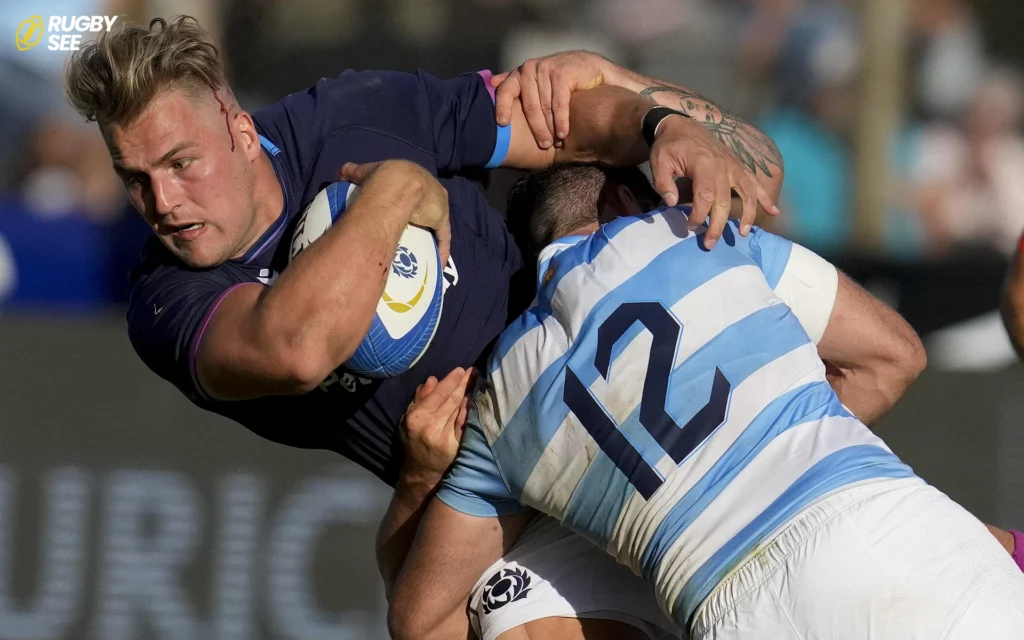Sports enthusiasts often discuss the athleticism and speed of athletes in different disciplines, with rugby and football (soccer) being two of the most popular sports around the world. A common question that arises is whether rugby players are faster than football players. In this article from Rugbysee, we will compare the speed and agility of rugby players versus football players to shed some light on this fascinating topic.
Understanding the Nature of Rugby and Football
Before comparing the speed of players in rugby and football, it’s essential to understand the differences in the nature of these sports:
Rugby
Rugby is a full-contact sport that involves running, passing, tackling, and kicking the ball to score points. It requires a unique blend of strength, endurance, agility, and speed. Rugby players compete in various positions, each with specific roles and physical demands.
Football
Football, also known as soccer in some regions, is a sport that focuses on kicking the ball to score goals. It requires players to exhibit skills such as dribbling, passing, and shooting while maneuvering around opponents. Football players need agility, endurance, and precise footwork to excel on the field.
Factors Affecting Speed in Rugby and Football
Several factors influence the speed of players in rugby and football:
Position
In both rugby and football, the position played significantly impacts the required speed and agility. For example, wingers in rugby and forwards in football often possess exceptional speed to outrun opponents, while defenders rely more on strength and tactical positioning.

Physical Attributes
The physique and build of players also play a crucial role in determining their speed. Rugby players tend to have bulkier physiques and greater muscle mass to withstand physical collisions, whereas football players may have leaner, more streamlined bodies optimized for agility and acceleration.
Training Methods
Training methodologies differ between rugby and football, with each sport emphasizing specific aspects of athleticism. Rugby players focus on strength training, endurance drills, and sprinting exercises to enhance their speed and power. Football players prioritize agility drills, quickness exercises, and technical skills training to improve their on-field performance.
Comparative Analysis of Speed
While both rugby and football players exhibit impressive speed and athleticism, it’s challenging to make direct comparisons due to the differences in gameplay, positions, and training methodologies. However, certain studies and anecdotal evidence provide insights into the speed capabilities of players in each sport:
Sprinting Speed
Some studies suggest that elite rugby players may achieve comparable sprinting speeds to professional football players over short distances. However, football players often excel in acceleration and agility due to the nature of their sport, which requires frequent changes in direction and quick bursts of speed and if you want to know about Skinny players in Rugby read Can I Play Rugby If I’m Skinny? A Comprehensive Guide.
Endurance and Stamina
Rugby matches typically last longer than football matches, requiring players to maintain high levels of speed and stamina throughout the game. Football matches, on the other hand, may involve more frequent bursts of intense activity followed by periods of rest.
The Role of Positional Requirements
Rugby Positions
In rugby, different positions require varying levels of speed. For instance, wingers and fullbacks often need exceptional speed to exploit gaps in the opposition’s defense and score tries. On the other hand, forwards, such as props and locks, focus more on physicality and strength to dominate in scrums and breakdowns.
Football Positions
Similarly, football players are assigned different roles based on their positions on the field. Forwards and attacking midfielders are expected to possess speed and agility to outmaneuver defenders and create scoring opportunities. Defenders, particularly fullbacks, need to be quick to track back and defend against opposing attackers.

Impact of Game Dynamics
Rugby Dynamics
The dynamics of rugby, with its continuous play and physical confrontations, demand a combination of speed, power, and endurance from players. Rugby matches consist of two halves lasting 40 minutes each, with few stoppages in play, requiring players to maintain high levels of intensity throughout the game.
Football Dynamics
Football matches, in contrast, consist of two halves lasting 45 minutes each, with additional time added for stoppages. The game is characterized by frequent changes in possession and tactical shifts, necessitating bursts of speed and agility from players to capitalize on scoring opportunities and defend against counterattacks.
Evolution of Training Methods
Rugby Training
In recent years, rugby training methodologies have evolved to prioritize speed, agility, and conditioning alongside traditional strength and power exercises. High-intensity interval training (HIIT), plyometrics, and speed drills are commonly incorporated into rugby training programs to enhance players’ overall athleticism and performance on the field.
Football Training
Football training methods also emphasize speed and agility, with players engaging in drills focused on acceleration, deceleration, change of direction, and footwork. Technical skills such as dribbling, passing, and shooting are honed through repetitive practice sessions designed to improve players’ on-field decision-making and execution.
In conclusion, the question of whether rugby players are faster than football players is subjective and dependent on various factors. Both sports showcase incredible athleticism and speed, with players in each discipline possessing unique skill sets and physical attributes tailored to the demands of their respective sports.

Rather than focusing solely on speed, it’s essential to appreciate the diverse talents and athleticism displayed by athletes in rugby and football. Whether it’s the explosive pace of a rugby winger or the nimble footwork of a football forward, both sports offer thrilling displays of athleticism that captivate audiences worldwide and if you want to know about Rugbt Players Height read are rugby players short.
As sports continue to evolve and athletes push the boundaries of human performance, the debate over the speed of rugby versus football players will remain a topic of fascination and discussion among fans and experts alike.










